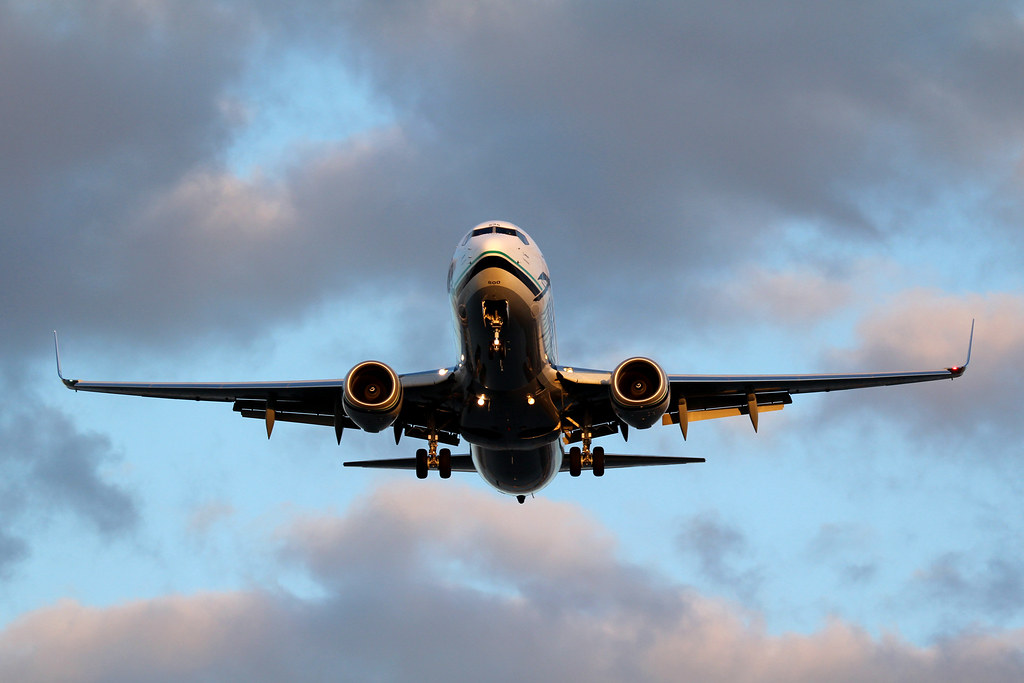Boeing 737 Max 8 Jets have remained grounded across the globe since investigators determined a link between the deadly Lion Air and Ethiopian Airlines crashes. As the search for answers continues, a look at the past of airline safety and the current details of the Max 8 investigation is necessary to understand how safe our skies are today.
Firstly, plane crashes are incredibly rare. The odds of your plane crashing are about one in 11 million compared to odds of about 1 in 103 for dying in a car crash. This massive difference in probability is due mostly to the fact that planes are not nearly as numerous as cars, airplanes are manufactured to adhere to many safety standards, and it requires extensive training to become a pilot.
Secondly, the amount of fatal plane crashes has actually gone down over time. From a peak of about 2,400 fatalities in 1972, the amount of fatalities in commercial plane crashes has decreased to zero in 2017 and 500 in 2018. Airplane safety has increased significantly in the past 50 years as new air safety features are developed and crashes are investigated by the National Transportation Safety Board.
Thirdly, about 80% of plane crashes are the result of pilot error as opposed to other factors, including mechanical issues, weather phenomena and sabotage. In addition, about 56% of crashes occur during takeoff and landing, while the safest part of the flight is when the plane is at cruising altitude or beginning its descent, both of which together account for about 12% of crashes.
While the investigation surrounding the 737 Max 8s has not yet been completed, investigators have identified the Maneuvering Characteristics Augmentation System (MCAS) as a likely culprit behind the Lion Air and Ethiopian Airlines crashes.
The MCAS is an automated system Boeing developed for the MAX series of 737s. Based on several parameters, most importantly the angle of attack of the plane, or the vertical direction it’s facing, the MCAS automatically lowers, or trims, the angle of attack to prevent the plane from tilting upwards and stalling in the air.
All of Boeing’s MAX series had their engines further forward on the plane, increasing the tendency for the plane to pitch skywards and enter a potentially dangerous stall. To help reduce the risk that came from Boeing’s new design, the MCAS was introduced.
The system, however, was never explained to pilots during Boeing’s trainings for the Max 8 because the company believed that pilots would never see MCAS in action except under rare circumstances. In addition, MCAS only used a single angle of attack sensor to determine whether the plane was stalling and additional safety features, including an angle of attack indicator for pilots and angle of attack disagree light, in the event of conflicting data from the plane’s two angle of attack sensors, were not included in all models of the jets because Boeing charged extra for the features. Neither of the two MAX 8s that crashed had these safety features.
On October 29, 2018, Lion Air Flight 610 crashed nearly 12 minutes after take-off from Soekarno-Hatta International Airport in Jakarta, Indonesia. Workers on a nearby offshore drilling platform reported that the plane had taken a sharp nosedive into the Java Sea and, in one of the final transmissions between the plane’s flight crew and air traffic control, the pilot described severe flight control problems.
Investigators later discovered that one of the angle of attack sensors on the plane had malfunctioned. The MCAS had assumed the readings from this sensor were evidence of the plane stalling and trimmed the plane’s nose, causing the plane to fly at full speed into the ocean, its untrained pilots unable to do anything.
Nearly 5 months later, Ethiopian Airlines Flight 302 crashed nearly six minutes after take-off from Addis Ababa Bole International Airport. Witnesses described how the plane had entered a steep nose-diving before crashing rapidly at, what later investigators determined, nearly 700 mph. During communication with air traffic control the pilot of the flight had requested to return to the airport after experience flight control issues.
The clear similarities between the two crashes, and the later revelations of how MCAS forced the two planes to lower their angle of attack based on faulty sensor readings, led to the groundings of all Boeing 737 Max series jets. Boeing’s share prices have fallen nearly 11% as deliveries for the Max series, which were its best-selling jets, have halted and several relatives of the victims of the crashes have sued the company for their role in the air accidents.
While Boeing has continued to struggle with the aftermath of the two crashes, the plane-building titan has claimed it will bring updates to the Max series, including mandating the angle of attack disagree light and updating the software behind MCAS. As the Max 8 saga continues, it shows how the continuing developments of modern airline safety come about and the importance of our safety in the air.
By Nicolas Greamo


































































